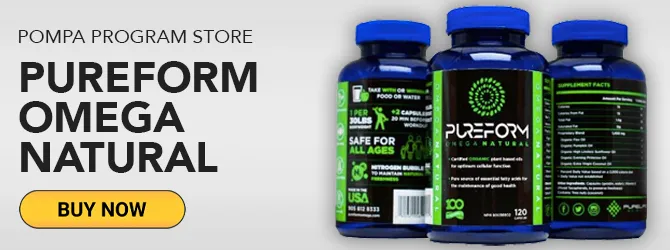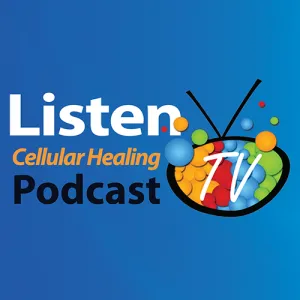Are you allergic to gluten, dairy, corn, peanuts or eggs? If so, you’re not alone.
Food allergies are at an epidemic level. According to the organization FARE, the Food Research and Education:1
- It is estimated that up to 15 million Americans have food allergies.
- Food allergies among children increased nearly 50% between 1997 and 2011.
- An allergic reaction to food sends someone to the emergency room every 3 minutes.
What makes it interesting is many of these allergies were not common just a few decades ago.
What Causes Food Allergies?
Today, many people are allergic to various foods that people in past generations were not, and there are several reasons for this phenomena.
The use of pesticides. Glyphosate is an herbicide that is sprayed on crops and used to kill weeds. It was registered for use in 1974 and is now one of the most widely used herbicides in the United States. Sold under the name Roundup by the company Monsanto, glyphosate has been linked to a condition called leaky gut, which is often described as “holes” In the intestines that allow undigested proteins to leak out. When this occurs, the immune system begins to overreact, causing a person to develop food allergies. Glyphosate has also been linked to autism, cancer, and many autoimmune disorders such as lupus, rheumatoid arthritis, and Crohn’s disease.
Glyphosate is not included in the U.S. government’s testing of food for pesticide, and the U.S. Environmental Protection Agency considers glyphosate safe. However, the UN’s International Agency for Research on Cancer released a statement in 2015 saying glyphosate “probably raises the risk of cancer in people exposed.”2
For more on glyphosate, read my interview with Jeffrey Smith here.
And watch my CHTV show with Dr. Stephanie Seneff here:
Vaccines. A vaccination is defined as an injection of a killed microbe in order to stimulate the immune system against the microbe. Vaccines are designed to temporarily stimulate the immune system to create antibodies against whatever is in the vaccination.
In other words, the body doesn’t just react to the virus, it also reacts to the food products that are in the vaccine as well. The following ingredients are found in commonly used vaccines for measles, the influenza virus, and yellow fever:3
- Egg protein
- Peanut oil
- Soy Protein
The result is a potential allergic reaction to those eggs, peanuts, and soy products when they are eaten.
Other harmful ingredients that may cause allergic reactions are in vaccines as well:4
- Formaldehyde
- Coal tar
- Soy protein
- Guinea pig embryo cells
- Human cells from aborted fetal tissue
- Aluminum
- Mercury
While many of these ingredients are known toxins that are harmful to humans, it’s these very toxins that increase the levels of antibodies in the system. If mercury is removed from the vaccine, more aluminum or formaldehyde would have to be added to stimulate the immune system.
While vaccines are designed to stimulate the immune system, they can stimulate it in a way that is more harmful than helpful. For example, when a person gets an illness like the measles, mumps, rubella, whooping cough, and others, they eventually recover. The disease itself stimulates a Th1 immune reaction, which gives a person a lifetime immunity to that specific disease.
Studies indicate vaccinated kids who do not get normal childhood diseases don’t receive the Th1 lifetime immunity, and eventually have immune problems later in life. A German survey on vaccinated and unvaccinated children between ages 0 and 17 discovered that common allergies had less of an impact on unvaccinated children than on their vaccinated counterparts:
- Less than 10% of unvaccinated children suffer from allergies of any kind. This compares with 40% of children in the USA ages 3-17 reporting an allergy to at least one allergen and 22.9% with an allergic disease.
- Of the vaccinated children, 4.7% suffered from asthma, 10.7% of these children suffer from hay fever and 13.2% deal with neurodermatitis. Among the unvaccinated children in the study, the prevalence of asthma was 2.5%, hay fever 3% and neurodermatitis 7% respectively.5
- Less than 1% of unvaccinated children had experienced sinusitis, compared with over 32% of vaccinated children suffering from sinusitis in Germany.
Vaccines are designed to stimulate the immune system. Instead, of stimulating the Th1 reaction, they activate the Th2 reaction, which is an emergency reaction. It is important to note that the Th2 reaction is not a lifetime reaction as seen in the Th1 immune reaction.
When people are encouraged to get flu shots annually or an extra dose of a vaccine, that’s called a booster shot. When a person receives booster shots, the body has another Th2 emergency reaction, which confuses the immune system. This repeated manipulation of the immune system is another explanation for the epidemic of autoimmune diseases and allergies that is plaguing society today.
Food Preparation: Then vs Now
Many studies have been conducted on the increase of allergies among children. In addition to the FARE study, the CDC reports that food allergies have increased 18% among children under 18 years of age from 1997 to 2007.6 Another big factor in the increase of food allergies is how food is being processed today compared to 30 years ago.
Gluten/Wheat. Wheat has been consumed by humans for thousands of years, but the first cases of gluten intolerance were described less than fifty years ago.7
In an effort to combat world hunger, Nobel Peace Prize winner Norman Borlaug created dwarf wheat. This wheat is half the size of the original wheat and grows even in drought conditions. In order to make dwarf wheat, it has to be changed by using x-rays and gamma rays. While the original wheat has gluten also, the hybrid version is what many people are allergic to.
Symptoms of a gluten allergy include the following:
Depression. Studies indicate there may be a link between gluten and depression:
- A study published by Ailmentary Pharmacology and Therapeutics believes gluten might affect the amount of tryptophan and serotonin in the body, which gives feelings of happiness.8
- Gluten allergies may cause malabsorption, which is the inability to properly absorb nutrients. As a result, brain functions may be compromised.
- The same study discovered that gluten ingestion was associated with higher depression symptoms in test subjects compared to subjects taking a placebo.9
Bloating. Improper digestion can be caused by a gluten allergy. Bloating can occur when food is not digested properly within the stomach and begins to ferment.
Chronic Fatigue. An allergy to gluten can cause fatigue, according to some studies:
- Researchers in the U.S. and Italy have evidence that gluten sensitivity increases the number of proteins that activate inflammation, while decreasing the number of suppressor T cells that decrease inflammation. This inflammation can cause a myriad of problems, including fatigue. Once gluten is removed from the diet, the symptoms subside.10
Joint pain. A gluten allergy may appear as joint pain in some individuals:
- A study in the journal Rheumatology discovered that patients who ate gluten free diet for nine months saw a reduction in their rheumatoid arthritis symptoms.11
Avoiding hybridized wheat and wheat products is key for eliminating these various health issues.
Foods that contain gluten include the following:12
Grains:
- Wheat (farro, durum, einkorn wheat, graham, farina, wheat berries, spelt emmer)
- Rye
- Barley
- Triticale
- Wheat starch
- Brewer’s yeast
- Malt (milkshakes malted barley flour, malt extract, malt flavoring, malt syrup, malt vinegar)
Common foods containing gluten:
- Baked goods (pie crust, cakes, cookies, brownies)
- Beer and malt beverages
- Breading and coating mixes (panko breadcrumbs)
- Breads and pastries (croissants, pita, naan, bagels, flatbreads, cornbread, potato bread, muffins, donuts rolls)
- Breakfast foods (pancakes, crepes, biscuits waffles, French toast
- Brewer’s yeast
- Cereal and granola (corn flakes)
- Crackers (graham crackers, pretzels, goldfish,)
- Croutons (dressings, stuffing)
- Flour tortillas
- Noodles (egg noodles, udon soba, chow mein, ramen)
- Pasta (couscous, dumplings, raviolis, gnocchi)
- Sauces and gravies (traditional soy sauce)
Possible food gluten sources:
- Brown rice syrup
- Candy
- Cheesecake fillings
- Dextrin
- Eggs served at restaurants
- Energy bars
- French fries
- Potato chips
- Pre-seasoned meats
- Processed lunch meats
- Salad dressings
- Self-basting poultry
- Soup
- Soy sauce
- Starch
- Tortilla chips
Other possible sources of gluten:
- Communion wafers
- Herbal supplements
- Lipstick/lip balm
- OTC medicines
- Playdough
- Prescription medicines
- Vitamin supplements
Knowing the many sources of gluten is the first step in removing this potentially harmful ingredient from the diet.
Read more about the dangers of hybridized gluten here.
Dairy/lactose intolerance. Lactose intolerance is the inability of adults and children to digest lactose, a sugar found in milk and dairy products.
Dairy products have been enjoyed for centuries, but according to recent statistics, the number of people allergic to dairy products in the United States is rising:13
- 40 million Americans are lactose intolerant.
- 90% of Asian-Americans are lactose intolerant.
- 33% of all Americans are lactose intolerant.
One major factor in the increase of lactose intolerance is how milk production has been altered. In an attempt to stimulate increased milk production in cows, the amino acid BCM7 (or casein) was altered. The body recognizes casein in its original form, which was Beta A2. After the genetic process, the casein was changed to Beta A1, which many people have difficulty digesting.
If a person has an inflamed gut, the enzymes in milk can’t be digested. Lactase is what’s used to break down the enzymes, and as a result, a person may experience the following allergic symptoms:
- Diarrhea
- Nausea
- Abdominal cramps
- Bloating
- Gas
While many would think avoiding milk altogether is the answer, it depends on the type of milk:
Milk from sheep and goats has not been altered, so they are still Beta A2 casein.
Milk that has been homogenized and pasteurized with massive amounts of heat has been stripped of many natural vitamins, minerals, proteins and enzymes.
Cows are meant to eat grass, NOT grains. Grains are loaded with glyphosate and other chemicals. As a result, cows are given antibiotics in an attempt to strengthen their immune systems. Most all milk is now full of antibiotics as well as chemicals from the grain and has the wrong ratios of fats. What’s more, after the milk is gathered, it is then pasteurized and homogenized to make it “safe” for human consumption.
The end result of these changes is an increase of people being lactose intolerant.
Milk has many health benefits and is safe for consumption if it is from healthy, grass fed cows. Meat from grass fed cows, and the milk they produce, are considered some of the world’s healthiest foods. Grass feeding can improve the quality of cow's milk, making it richer in omega-3 fats, vitamin E, beta-carotene, and CLA (the beneficial fatty acid Conjugated Linoleic Acid).14
To access my favorite A2 100% grass-fed and finished probiotic dairy products, go here.
Corn and Soy allergies. Soy and corn allergies are two of the most common food allergies in North America. Both of these products play an instrumental part in the controversial genetically modified organism (GMO) boom.
While wheat was hybridized, genetically modified product go one step further: an individual gene is inserted into a plant, changing the plant completely.
In the 1990’s, Monsanto originated the concept of creating GMO products that could grow under bad conditions like drought, as well as enabling products like corn to withstand more pesticides. Unfortunately, the DNA that is being put into corn is now sharing its information with our gut bacteria, and now we’re producing the chemical in our own guts.
As people ingest more and more of these chemicals and toxins the probability of having a leaky gut increases dramatically.
Watch more on leaky gut here.
The dangers of GMOs have been well known and documented for quite some time: In 1998, a group of scientists and public interest groups filed a lawsuit against the U.S. Federal Drug Administration requesting mandatory safety testing and labeling of all genetically modified foods. Unfortunately, the request was ignored, and the person in charge of the policy was Monsanto’s former attorney Michael Taylor, who later became their vice president.15
Other problems with GMO include the following:
- GMO can mutate or destroy the native gene in plants.
- The American Public Health Association and the American Nurses Association both condemn the use of GM bovine growth hormone. Studies indicate the milk from treated cows has an increased insulin growth factor (IGF-1) which is linked to cancer.
- Soy produces a phytoestrogen, or phytochemical, which mimics estrogen in the body. These plant sterols can drive up estrogen and lead to estrogen dominance.
- In many reports around the world, cows, pigs, geese, raccoons, mice, elk, chicken and buffalo all avoided genetically modified foods when given the choice.16
- Moreover, the American Academy of Environmental Medicine urges doctors to prescribe non-GMO diets for all patients.
Even with all the mounting evidence against GMOs, sadly it is not required for products to be labeled as genetically modified, and the FDA does not require a safety study.
It’s critical we understand the dangers of GMOs and avoid these products as much as possible. Instead of waiting on others to monitor the food on grocery store shelves, we must be proactive and do our own research.
Healthy eating tips.
- Here are a few tips to avoid soy, GMO products, and other potential allergens in food:
- Avoid all corn, soy, and canola products that are not labeled non-GMO
- Cook foods from scratch
- If it is not labeled GMO free, assume it has GMO.
- Look for products that are labeled USDA Certified Organic or Non GMO Verified
- Buy produce from local farmers.
- Inquire with farmers if their cows are 100% grass fed AND finished.
- Do not consume pre-packed, processed foods.
- Remove toxins from your diet and home.
- Eat 100% organic foods as much as possible.
- Go on a fast and slowly reintroduce foods back into your diet one at a time to test for allergies.
- Avoid foods that are labeled “dairy free,” gluten free,” “soy free,” etc. Many of these gluten-free products are actually dried glucose, or simple sugars, which can drive a person’s sugar levels up higher, even more so than regular wheat.
Many people have a myriad of health problems and do not realize it’s because of the various toxins and chemicals in their bodies. Making the changes listed here is a solid first step on the road to improved cellular health.
- CHTV Episode 80: To 5 Food Allergies
- It's Not Just Gluten — The Glyphosate Threat
- The Dangers of Glyphosate: An Interview with Dr. Stephanie Seneff
- Leaky Gut: An Interview with Zach Bush
- The Autoimmune Answer: As Simple as a “Three-Legged Stool”
- Cancer as a Metabolic Disease — An Interview with Dr. Thomas Seyfried
- The Truth About GMOs and the Diseases They Cause — Exclusive Interview With Jeffrey Smith
- CHTV Episode 35: Ebola Virus, Flu and Vaccines
- CHTV Episode 116: Dangers of Fluoridated Water and Mercury Amalgams w/ Dr. David Kennedy
- Adrenal Fatigue and the Endocrine System
- R4: Reducing Cellular Inflammation and Oxidative Stress
- How to Fix Muscle Imbalance
- R2: Regenerating the Cell Membrane
- CHTV Episode 110: How to Fix Leaky Gut
- Dr. Pompa's Top 10 Toxic Foods
- “Food Allergy Basics.” Facts and Statistics – Food Allergy Research & Education. https://www.foodallergy.org/facts-and-stats.
- Grossman, Elizabeth. “What Do We Really Know About Roundup Weed Killer?” National Geographic. April 23, 2015. http://news.nationalgeographic.com/2015/04/150422-glyphosate-roundup-herbicide-weeds/. (See report: http://www.iarc.fr/en/media-centre/iarcnews/pdf/MonographVolume112.pdf)
- “Egg allergy Prevention.” Mayo Clinic. January 27, 2015. http://www.mayoclinic.org/diseases-conditions/egg-allergy/basics/prevention/con-20032721.
- Susan E. Kreider, RN, CPC with thanks to Elizabeth F. Franklin for aesthetic development, and other mentors. “Vaccine Cocktail.” INFORMED CHOICE – Cocktail. http://liamscheff.com/wp-content/uploads/2011/02/Vaccine-cocktail.html.
- “State of health of unvaccinated children.” Survey results illnesses. http://web.archive.org/web/20130306034323/http://www.vaccineinjury.info/vaccinations-in-general/health-unvaccinated-children/survey-results-illnesses.html.
- Branum, Amy M., M.S.P.H., and Susan L. Lukas, D.O.,M.S.P.H. “Food Allergy Among U.S. Children: Trends in Prevalence and Hospitalizations.” Centers for Disease Control and Prevention. October 10, 2008. http://www.cdc.gov/nchs/products/databriefs/db10.htm.
- Linquette, M., P. Fossati, G. Lemaître, G. Luez, J. C. Fourlinnie, and M. Decoulx. “[Gastroparesis, hematemesis and diarrhea caused by gluten intolerance in a diabetic].” Lille medical : journal de la Faculte de medecine et de pharmacie de lUniversite de Lille. Aug. & sept. 1967. https://www.ncbi.nlm.nih.gov/m/pubmed/5619711/?i=4&from=/1278762/related.
- Peters SL, Biesiekierski JR, Yelland GW, Muir JG, Gibson PR. “Randomised clinical trial: gluten may cause depression in subjects with non-coeliac gluten sensitivity – an exploratory clinical study.” Aliment Pharmacol Ther. 2014 May;39(10):1104-12. https://www.ncbi.nlm.nih.gov/pubmed/24689456.
- Peters SL et al. “Randomised clinical trial: gluten may cause depression in subjects with non-coeliac gluten sensitivity – an exploratory clinical study.” Aliment Pharmacol Ther. 2014 May;39(10):1104-12. https://www.ncbi.nlm.nih.gov/pubmed/24689456.
- Uhde M, Ajamian M, Caio G, et al. “Intestinal cell damage and systemic immune activation in individuals reporting sensitivity to wheat in the absence of coeliac disease.” Gut 2016;65:1930–1937. http://gut.bmj.com/content/early/2016/07/21/gutjnl-2016-311964.full.
- Hafström I, Ringertz B, Spångberg A, et al. “A vegan diet free of gluten improves the signs and symptoms of rheumatoid arthritis: the effects on arthritis correlate with a reduction in antibodies to food antigens.” Rheumatology (Oxford). 2001 Oct;40(10):1175-9. https://www.ncbi.nlm.nih.gov/pubmed/11600749.
- Sources of Gluten.” Celiac Disease Foundation. https://celiac.org/live-gluten-free/glutenfreediet/sources-of-gluten/.
- Brain, Statistic. “Lactose Intolerance Statistics.” Statistic Brain. May 18, 2017. http://www.statisticbrain.com/lactose-intolerance-statistics/.
- Daley, Cynthia A., Amber Abbott, Patrick S. Doyle, Glenn A. Nader, and Stephanie Larson. “A review of fatty acid profiles and antioxidant content in grass-fed and grain-fed beef.” Nutrition Journal. March 10, 2010. https://www.ncbi.nlm.nih.gov/pmc/articles/PMC2846864/.
- Epstein, Ron, Steven Druker, and Bob Roth. “DA Documents Show They Ignored GMO Safety Warnings From Their Own Scientists.” FDA Documents Show They Ignored GMO Safety Warnings From Their Own Scientists. June 24, 1999. http://online.sfsu.edu/rone/GEessays/FDAdocuments.html.
- Smith, Jeffrey. “10 Reasons to Avoid GMOs.” Institute for Responsible Technology. August 25, 2011. http://responsibletechnology.org/10-reasons-to-avoid-gmos/.











